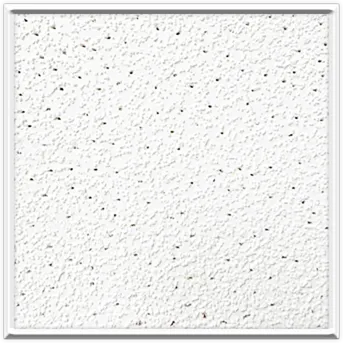- Afrikaans
- Albanian
- Amharic
- Arabic
- Armenian
- Azerbaijani
- Basque
- Belarusian
- Bengali
- Bosnian
- Bulgarian
- Catalan
- Cebuano
- Corsican
- Croatian
- Czech
- Danish
- Dutch
- English
- Esperanto
- Estonian
- French
- German
- Greek
- Hindi
- Indonesian
- irish
- Italian
- Japanese
- Korean
- Lao
- Malay
- Myanmar
- Norwegian
- Norwegian
- Polish
- Portuguese
- Romanian
- Russian
- Serbian
- Spanish
- Swedish
- Thai
- Turkish
- Ukrainian
- Uzbek
- Vietnamese
nov . 25, 2024 04:16 Back to list
Gypsum Ceiling Access Panels for Easy Installation and Maintenance Solutions
Understanding Gypsum Ceiling Access Panels
In modern建筑设计, the efficient use of space and materials is paramount. One vital component that has gained significant attention in recent years is the gypsum ceiling access panel. This functional yet often overlooked element plays a crucial role in maintaining the aesthetics of a ceiling while providing practical access for maintenance and inspection of utilities hidden above.
What is a Gypsum Ceiling Access Panel?
A gypsum ceiling access panel is a removable panel installed in a drywall (gypsum board) ceiling. Its primary function is to allow access to the space above the ceiling, which may contain electrical wiring, plumbing, HVAC systems, or other utilities that require occasional maintenance or inspection. The panels are typically flush with the ceiling surface, ensuring a seamless appearance that does not disrupt the overall design of the space.
Benefits of Gypsum Ceiling Access Panels
1. Aesthetic Appeal One of the most significant advantages of gypsum ceiling access panels is their ability to blend seamlessly into the ceiling. Unlike traditional access panels made from metal or plastic, gypsum panels can be painted or finished to match the surrounding ceiling. This feature makes them ideal for commercial and residential interiors where visual consistency is essential.
2. Easy Installation Gypsum ceiling access panels are designed for quick installation, making them a convenient choice for contractors. They typically come pre-framed and can be easily mounted into existing drywall structures. This simplicity reduces labor costs and project timelines, allowing for more efficient construction or renovation processes.
3. Durability Gypsum panels are inherently strong and resistant to fire, making them an ideal choice for spaces that require fire protection, such as commercial buildings and warehouses. Their robust nature ensures that they can withstand wear and tear over time, providing a long-lasting solution for access needs.
4. Sound Insulation Gypsum has sound-dampening properties, which helps to minimize noise transmission between rooms when used in ceilings. This characteristic is particularly beneficial in environments like hotels, office buildings, and residential complexes where noise control is a priority.
gypsum ceiling access panel

5. Versatility Gypsum ceiling access panels are available in various sizes and configurations, making them suitable for a wide range of applications. Whether it’s a small access point in a home or a larger panel in a commercial setting, these panels can be customized to fit specific needs.
Installation Considerations
When installing gypsum ceiling access panels, several factors must be taken into account
- Location It's crucial to plan the panel placement carefully to ensure that it provides convenient access to the utilities that require regular maintenance. Consideration should be given to the height of the ceiling and the need for ladders or scaffolding.
- Load-Bearing Capacity The access panel must be able to support the weight of any equipment or personnel that may need to access it. Ensuring that the surrounding structure can handle the load is essential for safety.
- Fire Safety Regulations Depending on the building codes in your area, certain fire-rated gypsum panels may be required, especially in commercial properties. Consulting with a building professional can help ensure compliance with all relevant regulations.
Conclusion
Gypsum ceiling access panels are more than just functional openings in a ceiling; they are a blend of practicality and aesthetics that contribute significantly to the overall design and functionality of a space. With their ease of installation, durability, and sound insulation properties, these panels are an excellent choice for anyone looking to maintain the integrity of their ceiling while ensuring easy access to essential utilities. Whether in a home, office, or industrial setting, gypsum ceiling access panels prove to be a vital component in modern architecture.
By understanding their benefits and installation considerations, architects, builders, and homeowners alike can make informed decisions about including these panels in their projects, ensuring that both functionality and design are prioritized. More than just a practical solution, they exemplify how thoughtful design can enhance spaces while addressing the everyday needs of maintenance and utility access.
-
Transform Interiors with PVC Gypsum Ceiling: A Stylish, Durable, and Moisture-Resistant SolutionNewsMay.19,2025
-
The Smart Interior Upgrade: Discover the Durability and Versatility of Gypsum Ceiling Access Panel SolutionsNewsMay.19,2025
-
The Smart Choice for Interior Design: Discover the Value of PVC Gypsum Ceiling SolutionsNewsMay.19,2025
-
Mineral Fiber Ceiling Tiles: The Smart Blend of Performance and AestheticsNewsMay.19,2025
-
Mineral Fiber Ceiling Tiles: The Superior Choice Over Gypsum for Sound and Fire SafetyNewsMay.19,2025
-
Mineral Fiber Ceiling Tiles: Eco-Friendly Strength and Style for Every CeilingNewsMay.19,2025







